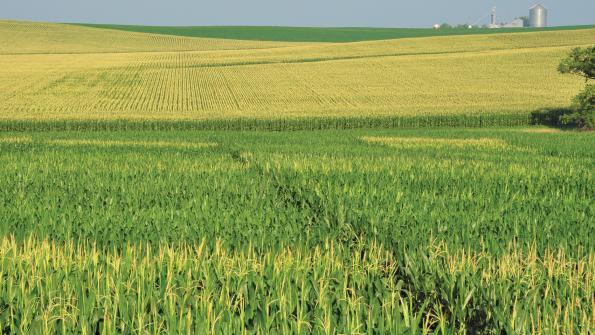October 3, 2012

As noted in a previous farmdoc Daily article, cash rent levels have been rising in recent years, with large increases occurring between 2011 and 2012, and more modest increases projected between 2012 and 2013. Besides rent levels, there have been trends in other cash leasing terms. These include 1) a movement toward yearly leases, 2) attempts to verify fertilizer applications, and 3) requirements for yield documentation. Each of these lease terms is discussed below.
One-year lease term
In years past, three-year leases were somewhat common and five-year leases occurred occasionally. Even longer-termed leases existed in specific situations. Under these longer-termed leases, rent levels often were set at a fixed amount for the entire lease term.
Many longer-termed leases have been discontinued in favor of a one-year lease term. Two reasons exist for this switch. First, farmland returns have been higher since 2006 than prior to 2006, resulting in an increase in cash rents since 2006. A longer-term lease that had its cash rent level set prior to 2006 often had a level below that which would have occurred after 2006, leading to current concerns about locking in a low rent into the future. Of course the opposite could occur as well: a high rent could be set now that is not sustained by farmland returns in the future.
The second reason for discontinuing longer-termed leases is the variability in farmland returns. Currently, it is difficult to project 2013 returns when setting 2013 cash rents. It is much more problematic to project returns for 2014 and 2015, thereby allowing appropriate cash rent levels to be determined for 2014 or 2015.
As a result, most cash rent leases now are one-year in length, with the possibility of re-negotiating the rent level each year to reflect changes in anticipated farmland returns. If a longer lease-term is desired, variable cash leases often are used.
Verifying fertilizer applications
Some landlords, particularly those with high cash rents, are concerned that farmers will not apply phosphorus and potassium fertilizer, leading to depletion of soil nutrient levels. There have been several different methods used to verify fertilizer applications, with no method being entirely satisfactory. These methods include:
1. The landowner requires soil testing every third of fourth year and then requires the farmer to apply enough fertilizer to bring phosphorus and potassium levels to prescribed thresholds. The issue with this method revolves around the nature of soil testing. Soil test levels can vary even if fertility levels have remained the same, particularly when soil tests are not taken from the same points in a field. Therefore, soil tests may indicate that there is a fertility levels have gone down when, in fact, fertility levels are the same. This uncertainty may lead to concerns when depletion has not occurred.
2. The landowner requires the farmer to provide documentation for fertilizer applications, such as fertilizer receipts. In this case, the concern is that the documentation may not reflect what fertilizer actually has been applied.
3. The landowner contracts to have fertilizer applied with a fertilizer supplier and then charges the farmer for fertilizer applications. Often, farmers have better relationship with fertilizer suppliers and understand fertility needs better than landowners. Hence, landowner purchases of fertilizer can result in higher costs and non-optimal fertilizer applications.
The difficulties in verifying fertilizer applications point to the need for trust between landowners and farmers.
Requiring yield documentation
The 2012 and future Farm Bills could allow for program yields used to determine program payments to be updated. This yield updating likely will require documentation of recent actual yields from a farm. The potential for yield updating has lead landowners to request yield documentation from their farms.
There are two difficulties. First, it is not known what documentation will be acceptable for yield updating. In the past, settlement sheets have been one form of acceptable documentation. Second, it may be difficult for a farmer to provide acceptable documentation, particularly if a farmer co-mingles grain from multiple farms in on-farm storage. If grain settlement sheets are acceptable, a farmer may not have a settlement sheet for each individual parcel that is farmed, but rather settlement sheets that are reflective of the entire operation.
Summary
Beside cash rent levels, other terms of cash leasing are changing. Shorter lease terms result from structural change and return variability. Many of the other leasing changes are the result of increasing distance in the relationship between landowners and farmers.
You May Also Like




